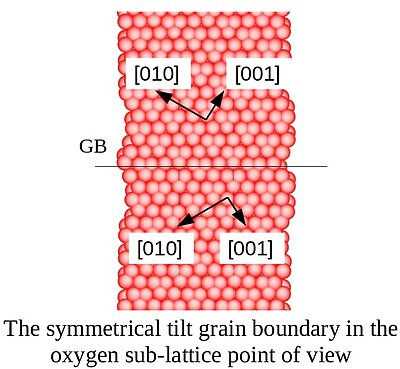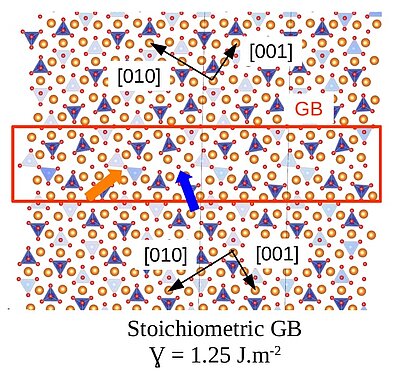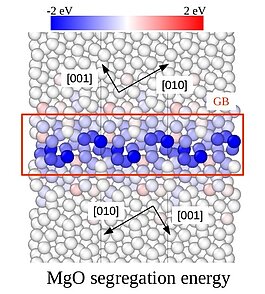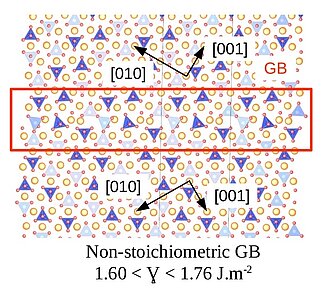Complexions and stoichiometry of a symmetrical tilt grain boundary in forsterite
In this study, we explore stable and metastable structures (complexions) of a symmetrical tilt grain boundary in forsterite using atomistic simulations. The studied grain boundary has a 60.8° disorientation around the [100] axis which corresponds to a symmetry element of the quasi hexagonal close-packed oxygen sub-lattice which is unchanged across the boundary. Although very specific this type of grain boundary, and particularly its symmetrical version (with a (011) grain boundary plane) studied here, is well represented in forsterite polycrystals.

We show that even for a given disorientation and a given grain boundary plane (the macroscopic degrees of freedom), the microscopic degrees of freedom such as crystal shift and stoichiometry lead to a wide variety of metastable grain boundary structures and energies. We find several grain boundary complexions presenting an anomalous non-silicate oxygen site which could participate to the water storage in mantle rocks.
We also point out, studying the segregation energy of MgO vacancy pairs, that the lowest energy grain boundary is not necessarily the most stable one.
A grain boundary could be seen as a phase in equilibrium with the surrounding environment and its structure and energy therefore depend on external factors.




